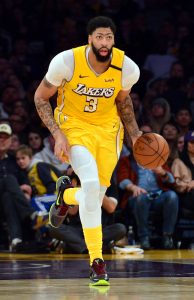The salary cap for the 2020/21 NBA league year has officially been set, with the league announcing that the cap will be $109,140,000 — the same as it was in ’19/20.
Under the league’s current Collective Bargaining Agreement, the values of the mid-level, room, and bi-annual exceptions are tied to the percentage that the salary cap shifts in a given year. Because the cap figure for 2020/21 doesn’t represent an increase or decrease, the values of the mid-level and bi-annual exceptions won’t increase or decrease either.
Listed below are the maximum annual and total values of each of these exceptions, along with a brief explanation of how they work and which teams will have access to them.
Mid-Level Exception (Non-Taxpayer):
| Year | Salary |
|---|---|
| 2020/21 | $9,258,000 |
| 2021/22 | $9,720,900 |
| 2022/23 | $10,183,800 |
| 2023/24 | $10,646,700 |
| Total | $39,809,400 |
The non-taxpayer mid-level exception is the primary tool available for over-the-cap teams to add free agents. As long as a team hasn’t dipped below the cap to use cap space and doesn’t go over the tax apron ($138,928,000) at all, it can use this MLE, which runs for up to four years with 5% annual raises.
Mid-Level Exception (Taxpayer):
| Year | Salary |
|---|---|
| 2020/21 | $5,718,000 |
| 2021/22 | $6,003,900 |
| 2022/23 | $6,289,800 |
| Total | $18,011,700 |
If an over-the-cap team currently projects to be a taxpayer, or expects to move into tax territory later in the 2020/21 season, it will have access to this smaller mid-level exception for taxpaying teams.
If a team uses more than $5,718,000 of its mid-level exception, it is forbidden from surpassing the tax apron at any time during the league year. So even if a team isn’t above the apron when it uses its MLE, it might make sense to play it safe by avoiding using the full MLE and imposing a hard cap.
The taxpayer MLE can be used to sign a player for up to three years, with 5% annual raises.
Room Exception:
| Year | Salary |
|---|---|
| 2020/21 | $4,767,000 |
| 2021/22 | $5,005,350 |
| Total | $9,772,350 |
Although this is also a mid-level exception of sorts, it’s colloquially known as the “room” exception, since it’s only available to teams that go below the cap and use their cap room.
If a club goes under the cap, it loses its full mid-level exception, but gets this smaller room exception, which allows the team to go over the cap to sign a player once the team has used up all its cap space. It can be used to sign players for up to two years, with a 5% raise for the second season.
Bi-Annual Exception:
| Year | Salary |
|---|---|
| 2020/21 | $3,623,000 |
| 2021/22 | $3,804,150 |
| Total | $7,427,150 |
The bi-annual exception, as its name suggests, is only available to teams once every two years. Of the NBA’s 30 clubs, only four – the Mavericks, Grizzlies, Pistons, and Raptors – used it in 2019/20, so they won’t have access to it in 2020/21. The league’s other 26 teams could theoretically use it this season.
Still, even if a team didn’t use its BAE in ’19/20, that club doesn’t necessarily have access to it for the coming year. As is the case with the non-taxpayer MLE, this exception disappears once a team goes under the cap. It’s also not available to teams over the tax apron — using the BAE creates a hard cap at the apron.
The BAE can be used to sign players for up to two years, with a 5% raise after year one.
Note: Be sure to check out our Hoops Rumors Glossary installments for more information on the mid-level exception and the bi-annual exception.

 We’ll likely soon be able to apply these numbers to contracts for free agents
We’ll likely soon be able to apply these numbers to contracts for free agents